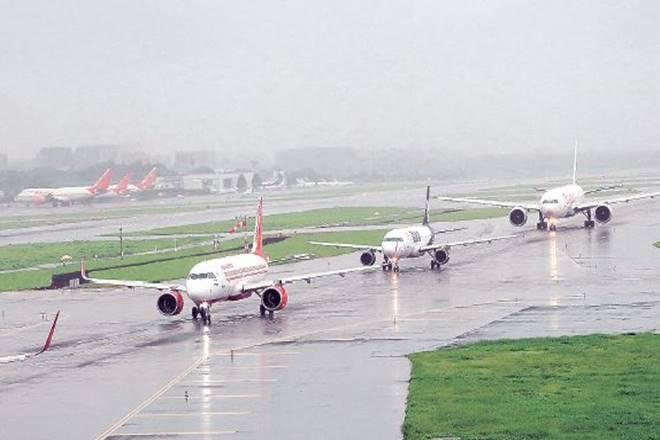UDAN: Yet to Take Off?

In the last session of Parliament, the government acknowledged that only one-fourth of the air routes granted under the Regional Connectivity Scheme (RCS) or UDAN (Ude Desh ka Aam Nagrik- loosely translated to ‘every common man flies’) have become operational. Flights have commenced so far on merely 186 out of 705 RCS routes it had offered to airline operators so far, it said.
It also said that the Airports Authority of India, a Miniratna public sector undertaking (PSU), has “suffered losses on account of maintenance of non-operational airports” during the current year as well as the past three years.
Official air traffic data clearly show that passenger movement to and from the metro cities disproportionately dominate the double-digit growth being witnessed currently. Over 60% of domestic and 73% of international passenger traffic operate from six metro cities, the data shows.
Despite acknowledging the above, the government has again asked the AAI to firm up plans to invest Rs 25,000 crore over the next four years to upgrade airport infrastructure in the country, especially in smaller cities, the Rajya Sabha was informed. The works would include building of new terminals or upgrading existing ones, extending existing or creating new runways, apron and building or modernising air traffic control and navigational facilities.
Also read: Why the Rush for Privatisation of Airports?
This raises the question whether the government has taken the prevailing situation where airlines are not operating on the RCS-UDAN routes into account, while asking the airport Miniratna to invest heavily in smaller airports. The airlines do not have adequate number of small aircraft in their respective fleets to fly to Tier-II and Tier-III destinations. It is being asked whether the government has put the cart before the horse while trying to give a push to regional connectivity.
In reply to a question in Rajya Sabha on July 17 on whether the AAI has suffered losses on account of maintenance of non-operational airports, the Minister said “Yes, Sir. The AAI has suffered losses on account of maintenance of non-operational airports during each of the last three years and the current year.” Viability Gap Funding of about Rs 250 crore was also paid to scheduled airlines operating RCS-UDAN flights during this period.
The Ministry of Civil Aviation (MoCA) has itself said that the reasons for airlines not operating on 519 out of 705 RCS routes include unsustainability of operations there, non-readiness of civil airports or heliports due to issues relating to availability of land, absence of regional infrastructure and “seasonal demand”. The Minister observed that the RCS-UDAN scheme was “demand-driven and development of regional air connectivity routes depends on the market forces wherein airlines undertake assessment of demand and supply required on a particular route”. Non-operation of flights to 75% of the RCS routes/destinations have also led to the cancellation or termination of a few (nine) of these routes and networks due to default by the selected airline operators. The question then arises as to why the AAI is being asked to invest more on airports if there is no guarantee that the airlines will start operating from there.
The total number of total unserved and under-served airports and waterdromes (for seaplanes) that were identified for award in three rounds of bidding stands at 106, including ten waterdromes and 20 unserved airports. Of these 106, only 39 RCS-UDAN airports (16 underserved and 23 unserved) have been revived or developed for operationalisation of RCS flights, as per a statement made by the Minister in the Lok Sabha last month.
A recent media report quoting an RTI query showed that the government had spent Rs 35.67 crore in 2018-19 for the upkeep of 27 ‘ghost’ airports from where no flights take off. These 27 are among a total of 31 non-operational airports in the country. There are another 15 airports that are operational, but no scheduled flights take off from there, this report said. In reply to the RTI query, the directorate of finance and accounts of the AAI said these 27 non-operational airports were built at a cost of Rs 40.69 crore. Even though non-operational airports do not handle flights, they need to be maintained, their staff paid and depreciation accounted for. The replies to the RTI query were buttressed by the Ministry in answers to several related questions in the two Houses of Parliament.
Also read: Another Airline Takes a Dive in India
The crux is how can air connectivity be provided by attracting private airlines and encouraging regional carriers to launch flights from the new airports in Tier-II or Tier-III destinations. However, the reality is something else.
Late last year, the AAI had cancelled 58 licences of regional carriers Air Odisha and Deccan Charters, who were awarded 84 routes under UDAN. Most of these routes connected smaller towns in Chhattisgarh, Tamil Nadu and Odisha. The cancellations came as these carriers either failed to launch their flights or, if launched, could not continue with their flight operations on the routes awarded to them within the given time span. They were unable to start or sustain operations. In addition, AAI served Air Odisha and Deccan Charters notices for cancellation of the remaining 26 routes. The AAI had awarded 128 routes to five airlines in March 2017 in the first phase of UDAN bidding. The same story was repeated on many other UDAN routes where flights did not start or the services stopped due to lack of demand. A prime example is the operations at the civilian enclave at the Kanpur airport where only one private airline flies off and on, while Air India has stopped operating to this major business hub of Uttar Pradesh.
Aviation consultancy firm Centre for Asia Pacific Aviation (CAPA) India recently said that regional airlines' participation in the Regional Connectivity Scheme made little business sense given the huge cost structure of the airline business. "The success of UDAN depends on the participation by established airlines. It does not make a business case for small and independent operators without scale," CAPA noted. Besides the cost-revenue mismatch, poor airport infrastructure is the other major hurdle to safety as well as to faster revenue growth.
Since the first phase of RCS-UDAN bidding, the rules of the game were also regularly changed in a bid to attract airlines. The original idea of the RCS scheme was to connect the underserved and unserved airports, an objective that has not yet been achieved. The government had declared a long list of airports which it intended to operationalise in due course and had opened them up for bidding. The airlines were free to seek subsidy with a maximum cap, depending on the number of seats they intended to deploy on a route. The airline seeking the least subsidy would win the rights to fly on that route. These rules were changed again. Instead of the airports at interior places, the rules were altered to make RCS-UDAN route-centric. Thus, connecting these interior destinations with metro cities became more attractive for the airlines, instead of boosting traffic within the regions as visualised in the UDAN scheme.
Ironically, a couple of private airlines which won a substantial number of regional routes leveraged the regional connectivity scheme to get additional slots at the already-congested major airports in the name of operating UDAN flights. It is to be seen whether these slots are being used to connect RCS-UDAN destinations or are being used otherwise.
It should also be noted that there is considerable scarcity of regional or small airplanes owned by scheduled airlines which can operate on smaller runways. The acquisition of regional aircraft has so far not been a priority in the acquisition business plans of the most private airlines, barring Air India and its affiliate Alliance Air. In any case, Air India’s decision-making is driven by the government rather than commercial logic. And that makes it difficult to ascertain if UDAN has had any impact on their route decisions or aircraft acquisition plans.
Also read: The Jet Airways Crisis Sheds A Stark Light On India’s Aviation Market
As of July 15 this year, there are 83 small or regional aircraft in India, including ATRs, Bombardier Q400s, CRJs and Beechcraft, as per official figures. This is out of a total of around 625 airplanes owned by all Indian carriers put together. This clearly reflects the priorities of the business plans. While the Indian airlines have placed orders for over 1,000 more airplanes (which are to be delivered by 2022-23), the number of smaller planes, needed for regional connectivity, is far too less.
Hence, in the absence of regional airlines and the lack of smaller aircraft, the idea of ‘hawai chappals in hawai jahaaz (accessibility of air travel to lower middle class)’ would continue to remain a distant dream, even if the AAI continues to build and modernise airports across the country.
(The writer was Deputy Executive Editor of news agency, Press Trust of India, and has extensively covered civil aviation and defence. The views are personal.)
Get the latest reports & analysis with people's perspective on Protests, movements & deep analytical videos, discussions of the current affairs in your Telegram app. Subscribe to NewsClick's Telegram channel & get Real-Time updates on stories, as they get published on our website.
























